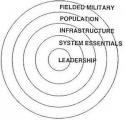As it plans for an extended struggle against terrorism, the U.S. Special Operations Command is realizing that it is going to need a lot of outside help, and it is reaching out to civilian agencies, allied nations and private contractors.
While special operators now are deploying in larger numbers than they ever have before, the State Department is emerging as a key civilian partner to SOCOM, said Thomas W. O’Connell, assistant secretary for special operations and low-intensity conflict.
The office of the coordinator for reconstruction and stabilization, or S/CRS, was created in 2005 to facilitate the work of a wide range of non-military agencies, including the State, Justice and Treasury Departments...
The State Department lacks the facilities to train and equip a response corps, but the Defense Department does not. Recognizing this, Congress included in the 2006 defense appropriation a provision permitting the Pentagon to spend up to $200 million a year over two years for that purpose, O’Connell noted. In addition, the State Department requested $75 million in its 2007 budget to build its civilian response capabilities, Wong said.
As part of that effort, the Defense and State Departments are cooperating with other U.S. and international agencies in a series of training exercises. In March, for example, the U.S. Joint Forces Command partnered with the State Department to launch Multinational Experiment 4, involving eight countries and NATO to practice interagency and coalition planning...







Bookmarks